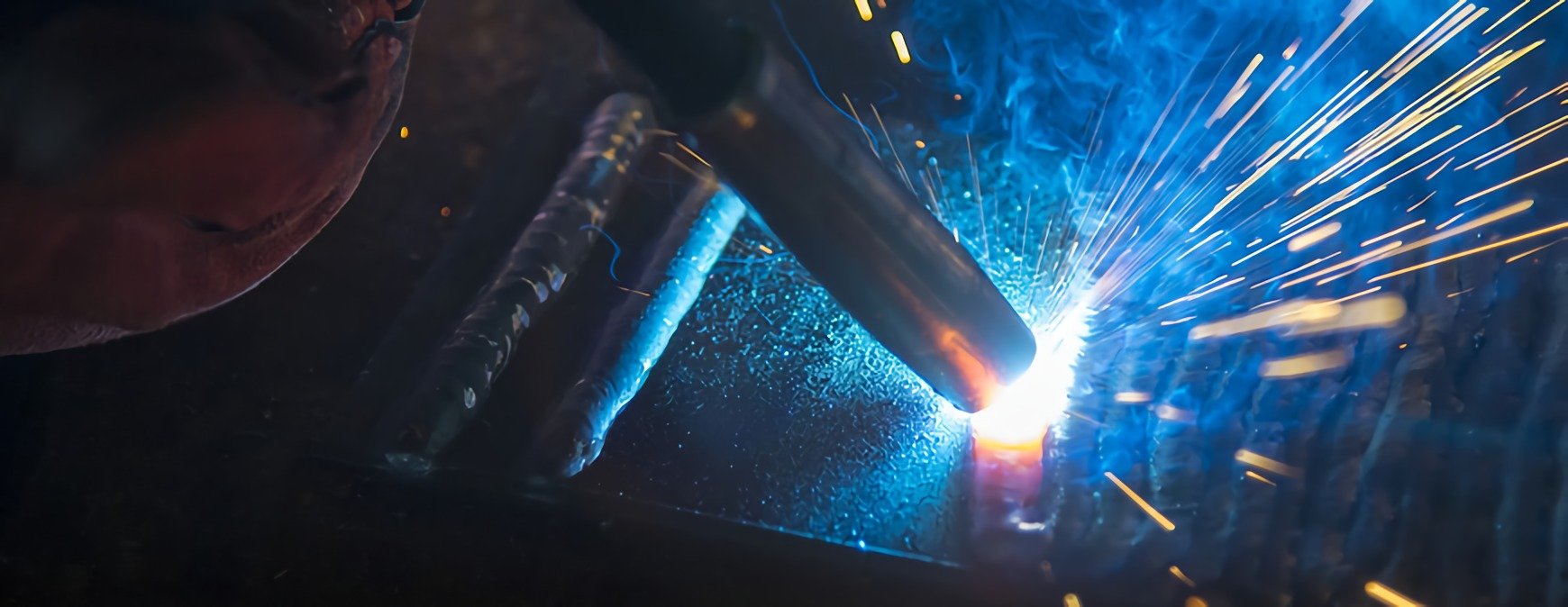
Can any metal be welded? Yes, but producing a strong, quality weld with some metals requires much more skill and care than with others. The ease with which metals can be fused without producing defects in the finished product is called “weldability.” 1 2
What Is Weldability?
The American Welding Society defines weldability as, “the capacity of a metal to be welded under the fabrication conditions imposed into a specific, suitably designed structure and to perform satisfactorily in the intended service.” When nearly any process can be used on a metal and minimal effort is necessary to produce a sound weld, the metal is said to have “good weldability.” In cases where a welder can choose from only a limited number of processes and must carefully prepare the joint and execute the welding procedure to create a strong weld, the metal is considered to have “poor weldability.” 3
One of the main objectives in welding is to create a joint that is free of cracks and that can withstand the stresses placed on it. As you discover in your welding classes, some processes work better with certain metals. There are welding charts that show which processes work best with which metals. 4
What Are the Factors Affecting Weldability?
Several factors influence the weldability of metals. Below are some of the most important ones.
- Metallurgy: The science of heating or manipulating metals to produce desired properties or shapes in them. 5
- Welding Process: There are more than 67 welding processes. Various factors set them apart: how the heat and pressure are applied, how much heat and pressure are used, and the type of equipment employed. 6
- Joint Design: The combination of the dimensions required for the welded joint and the geometry of the joint. 7
- Weld Preparation: As the name suggests, weld preparation is a set of techniques to execute prior to welding to prevent defects in the weld. 8 For example, one practice is to clean base metals before welding. 9
- Melting Point: The temperature that must be reached for a solid substance to melt or fuse. 10 When a metal has a medium melting point, it has better weldability. 11
- Electrical Resistance: A metal’s opposition, or resistance, to the flow of electrical current. 12 Metals with a high electrical resistance require more heat energy to weld and this makes them have poor weldability. 13
How to Improve Weldability.
The heating and cooling cycles inherent to most forms of welding can create strains and stresses in the weld. They also affect physical, chemical, and metallurgical changes in the metal. When such changes make a metal prone to poor weldability, adjustments can be made to improve the quality of the weld.
Have You Considered a Career in the Skilled Trades?
Fill out the form to recieve a no obligation info packet.
- Shielding Gas: Some types of metals, such as copper and aluminum, require a gas to shield them from atmospheric contaminants during welding. Selecting the correct shielding gas for the application in the right quantity can minimize the chance of weld defects.
- Welding Process: Welding charts are available to use as a reference for which process to choose for a metal.
- Filler Metal: Choosing the wrong filler metal can cause defects in the weld, such as cracks and porosity. If you’re a student in welding training and not sure which filler metal to use, a good general rule is to select a filler metal that is stronger than the base metal.
- Preheat and Postheat: Brittle metals are prone to cracking during welding. Heating the metal prior to welding and afterward can alleviate this problem.
- Welding Procedure: Weld quality can be dependent on the number of welds, their length, and the size of the weld bead. Several small welds can be more effective than a few large welds. 14
Preparing for Better Welds
While all metals can be welded, some fuse more easily than others. However, an understanding of the factors that influence weldability and the practices to improve it can help a welder consistently produce strong, sound products.
Additional Sources
1 – Title: Welding Principles and Applications; Author: Larry Jeffus; Delmar Cengage Learning; Seventh Edition; Textbook page 668
2 – https://me-mechanicalengineering.com/weldability/
3 – Title: Welding Principles and Applications; Author: Larry Jeffus; Delmar Cengage Learning; Seventh Edition; Textbook page 668
4 – http://www.wisegeek.com/what-is-weldability.htm
5 – http://www.dictionary.com/browse/metallurgy
6 – Title: Welding Principles and Applications; Author: Larry Jeffus; Delmar Cengage Learning; Seventh Edition; Textbook page 8
7 – Title: Welding Principles and Applications; Author: Larry Jeffus; Delmar Cengage Learning; Seventh Edition; Textbook page 898
8 – https://www.bakersgas.com/weldmyworld/2012/04/05/how-to-properly-prepare-metal-for-welding/
9 – Title: Welding Principles and Applications; Author: Larry Jeffus; Delmar Cengage Learning; Seventh Edition; Textbook page 668
10 – http://www.dictionary.com/browse/melting-point
11 – https://me-mechanicalengineering.com/weldability/
12 – https://www.thefreedictionary.com/electrical+resistance
13 – https://me-mechanicalengineering.com/weldability/
14 – Title: Welding Principles and Applications; Author: Larry Jeffus; Delmar Cengage Learning; Seventh Edition; Textbook page 669
This blog has been labeled as archived as it may no longer contain the most up-to-date data. For a list of all current blog posts, please visit our blog homepage at https://www.tws.edu/blog/







